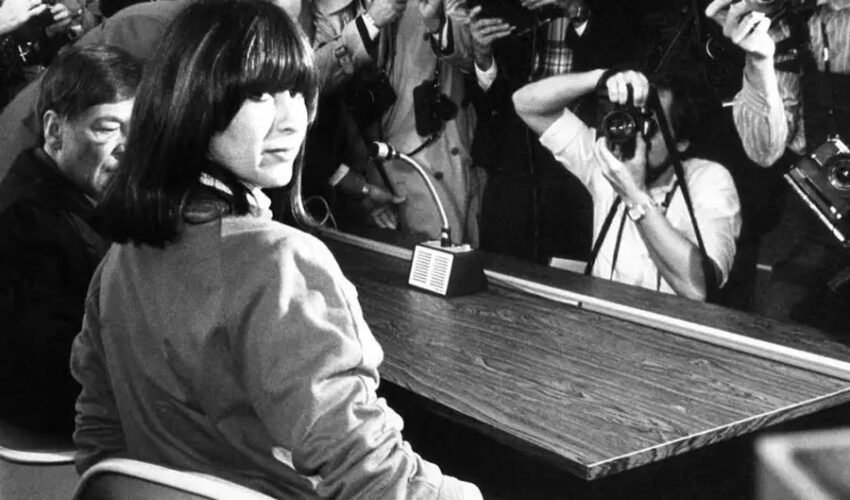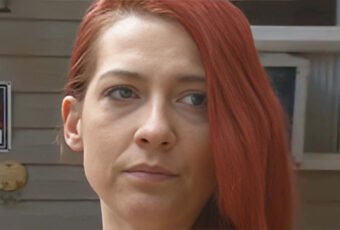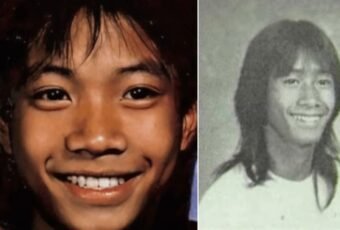On March 6th, 1984, grieving German mother Marianne Bachmeier walked into a crowded courtroom in Lübeck, Germany, pulled out a pistol, and shot defendant Klaus Grabowski 8 times at point-blank range, killing him in front of dozens of witnesses. Grabowski was on trial for the horrific rape and strangulation murder of Bachmeier’s beloved 7-year-old daughter, Anna.
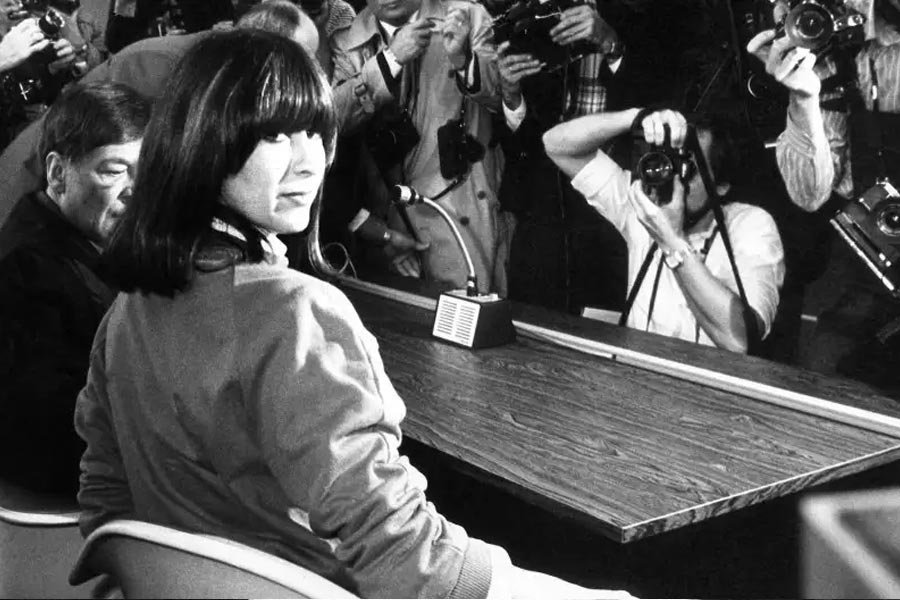
This dramatic and very public act of vengeance shocked the world and brought international attention to both the tragic story of Marianne Bachmeier and her daughter, as well as the glaring flaws in the German legal system that had failed them. Bachmeier took the law into her own hands that day, driven by a profoundly grieving mother’s rage and despair.
To fully understand the painful circumstances that drove Marianne to carry out such a violent public execution in a court of law, it is essential to closely examine Marianne Bachmeier’s background, the loss of her daughter, and the monumental judicial failures that enabled it all.
Marianne Bachmeier’s Early Life and Daughters
Marianne Bachmeier (née Perske) was born in September 1950 in Lübeck, Germany. Her early life was marked by instability and poverty. She gave birth out of wedlock to two children in the late 1960s, a son and a daughter, whom she made the painful decision to give up for adoption based on her inability to care for them properly at such a young age.
In 1970 at the age of 19, Perske married her first husband Wolfgang Bachmeier. In 1973, she gave birth to a daughter she named Anna, followed by another daughter named Magdalena in 1978—three girls in less than a decade.
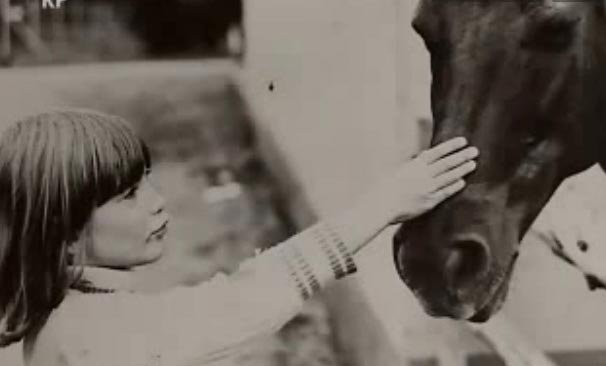
By the early 1980s, Bachmeier was a single mother caring for Anna and Magdalena on her own after separating from her husband. She worked multiple jobs to make ends meet for her daughters, including as a nurse’s aide at a local hospital and running a small pub in Lübeck that she owned.
Despite the challenges of being a single parent, friends and neighbours described Bachmeier as a doting and devoted mother who worked tirelessly to provide for her girls. She was particularly close with her elder daughter Anna, a bright and outgoing child who loved music and dancing. Bachmeier encouraged Anna’s talents and saw so much potential and joy in the little girl.
That all changed on one spring day in May 1980, when Bachmeier’s beloved Anna was lured away and murdered by a known sexual predator living nearby.
The Brutal Murder of Anna Bachmeier
On May 7th, 1980, 7-year-old Anna Bachmeier came home from school visibly upset after an argument with her mother that morning. After eating lunch, the distressed girl left the family’s apartment on her own without telling anyone. Tragically, she would never return.
Anna crossed paths that day with a 35-year-old neighbour named Klaus Grabowski. Grabowski was a local butcher and mechanic who lived in the same apartment complex as the Bachmeiers. Unbeknownst to the family, Grabowski had an extensive criminal history of child sexual abuse charges, including the molestation of his own 8-year-old daughter who had been removed from his custody. However, time and again, Grabowski had been given light sentences by the courts for his offences against children.
Grabowski lured young Anna into the basement below his apartment that afternoon. There, he proceeded to rape and sexually abuse the 7-year-old girl before strangling her to death with her own underwear. He stuffed Anna’s lifeless body into a cardboard box, which he dumped near a canal the same day.
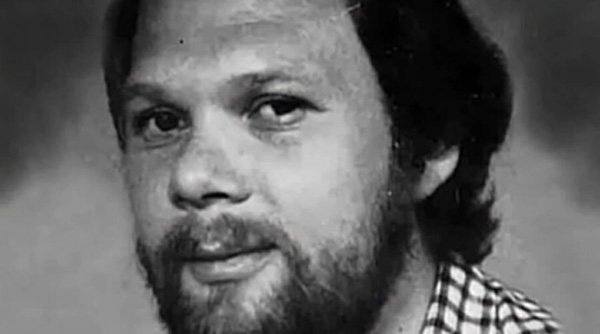
By coincidence, Grabowski’s suspicious activity was noticed by neighbours who reported it to the police. Officers arrived and questioning of Grabowski quickly elicited a full confession to the abduction and murder of Anna Bachmeier. He was arrested on the spot.
For Anna’s heartbroken mother Marianne, the arrest offered little comfort or justice for the daughter who had been so violently ripped from her world. In his statements to police, Grabowski distastefully tried to portray 7-year-old Anna as a manipulative child who had attempted to seduce him and then blackmail him for money in exchange for keeping silent about his assaults on her. Marianne knew in her grieving mother’s heart this could not be true. Her daughter had been a pure and loving child, not capable of such behaviour. Grabowski was simply a monster trying to justify his crimes.
And yet, the German justice system and courts seemed content to enable Grabowski’s continued freedom and escalating crimes against children…
Failure to Punish: The Grabowski Trial
In March 1981, almost a full year after Anna’s murder, the trial of her confessed killer and abuser Klaus Grabowski commenced in Lübeck District Court. It marked the culmination of Marianne Bachmeier’s agonizing quest to see justice served for her slain daughter. However, the trial would become a farce exposing systemic failures in Germany’s courts when dealing with violent crimes against women and children.
Making matters even worse for Bachmeier, Grabowski refused to speak or show remorse during most of the trial proceedings. His court-appointed defence attorney instead pursued a reprehensible legal strategy that attempted to excuse his client’s actions.
Unbelievably, the defence claimed Grabowski had murdered Anna Bachmeier due to an alleged hormonal imbalance caused by hormone therapy from when he was voluntarily surgically castrated years earlier. In reality, Grabowski had sought the castration procedure in a calculated attempt to get lighter sentences for his repeated child molestation convictions, not due to any medical necessity. However, the defense’s abhorrent tactic suggested the castration had somehow turned Grabowski into an uncontrollable killer.
As Bachmeier sat grief-stricken in the courtroom day after day, the possibility became very real that, despite his graphic confessions, Grabowski might actually be acquitted or receive yet another light slap on the wrist for his crimes against Anna.
The failure of justice was too much for this devastated mother to bear.
A Mother’s Revenge
On the third day of the trial, March 6th, 1981, during a court recess, Marianne Bachmeier finally reached her breaking point.
What pushed her over the edge was Grabowski’s continued claims that 7-year-old Anna had tried to sexually seduce him and then blackmail him for money. Bachmeier knew in her grieving mother’s heart this was a monstrous lie told by an unrepentant child killer.
Gripped by rage and despair over this final insult to her daughter’s memory, Bachmeier pulled out a loaded .22 caliber Beretta pistol concealed in her purse and opened fire on Grabowski.
Bachmeier unloaded the pistol’s magazine of 8 bullets directly into the man who had raped and murdered her only daughter. Six shots struck Grabowski in the back before officers tackled Bachmeier to the ground, ending her furious attack. Grabowski was pronounced dead at the scene from his injuries.
In the pandemonium of the courtroom turned crime scene, eyewitnesses reported that Bachmeier spat hatefully at Grabowski’s lifeless body on the ground, saying “You got what you deserved, pig.” She expressed no remorse in the immediate aftermath, allegedly telling the judge, “I wanted to kill him.” Her singular goal had been achieved: vengeance for her dead child.
Bachmeier was taken into custody and did not resist arrest. Almost immediately, she admitted that the shooting had been premeditated and that she had been contemplating killing Grabowski ever since her daughter’s body was found. In her grief-stricken mind, it was the only justice left for Anna.
Her vigilante actions also forced Germany to reckon with glaring systemic failures in how it handled violent crimes against women and children. Why had the system, time and again, treated Grabowski’s crimes against children so lightly? Why had it allowed a known predator like him to roam free and ultimately steal the life of an innocent child like Anna?
Push for Justice: Legal Reforms
The courtroom shooting sparked intense scrutiny of Germany’s legal system. The public decried the repeated light sentences handed down to Grabowski over the years that had enabled his escalating criminal violence. They also questioned why he had been allowed to live freely among families like the Bachmeiers despite his known danger to children.
Galvanized by public outrage, campaigns pushed for major legal reforms to better protect women and children from violent crimes. By the early 1990s, Germany instituted sweeping changes:
- Harsher punishments were enacted for sex crimes, including up to 15 years in prison for child sexual abuse
- Child testimony reforms allowed cases to proceed based on victims’ statements
- Special victims units were created in police departments
- More public resources were devoted to psychological care and counselling for abuse victims
While Germany still grappled with the best methods to rehabilitate violent offenders, the justice system undoubtedly improved for victims. However, these vital reforms came tragically too late to save the life of Marianne Bachmeier’s daughter Anna.
Reaction: Sympathy and Outrage
The German public reacted to Bachmeier’s courtroom vengeance with both sympathy and outrage. Many saw her actions not as deranged vigilantism, but as an act of last resort by a desperate grieving mother failed by the courts.
During her highly publicized trial for Grabowski’s murder, Bachmeier attracted significant support. Crowds gathered outside the courtroom chanting “Marianne, we understand you!” She received over 15,000 letters from around the world expressing empathy.
However, others condemned Bachmeier for taking the law into her own hands. They argued she had denied Grabowski his right to a fair trial, regardless of his alleged crimes. The case stirred a complex debate on whether Bachmeier’s actions were justified vigilante justice or dangerous disregard for the legal system, even in light of its failures.
In 1983, a German court ultimately convicted Bachmeier of premeditated manslaughter. In a polarizing decision, she was sentenced to just 6 years in prison. While some saw this as overly lenient, others considered it a fair balancing of justice and mercy. After serving half of her term, Bachmeier was released from prison in 1985.
Life After Prison: More Tragedy
After being freed from prison in the 1980s, Marianne Bachmeier briefly moved to Africa before returning to Germany later that decade. She attempted to rebuild her life, but understandably struggled to move past the agonizing loss of her daughter Anna. She suffered from severe depression and was consumed by grief.
In the early 1990s, while being treated for cancer, Bachmeier met and married a doctor named Uwe Wilkening. For a time, it seemed she had found some stability and happiness in her life again. However, the marriage ended in divorce after just a few years.
Her former husband later told reporters Bachmeier’s life remained defined by the trauma surrounding her daughter’s murder. “Marianne never really arrived in the present,” Wilkening said. “She was never able to laugh freely again.”
The emotional scars were still raw when Marianne Bachmeier passed away from pancreatic cancer in 1996 at the age of just 46. In one final tragedy, she outlived her youngest daughter Magdalena, who died from unknown causes in 1990 at only 22 years old.
Bachmeier was laid to rest in a Lübeck cemetery beside the grave of her beloved murdered daughter Anna.
Legacy: Flawed Justice
The sad story of Marianne Bachmeier stands as a warning about the terrible cost of a justice system’s failure. Despite Grabowski’s known danger, the courts’ repeated light sentences against him enabled his escalating criminal violence. This lack of accountability ultimately led to the death of her innocent child, Anna.
When the law repeatedly failed her family, Bachmeier resorted to brutal vengeance. Her case directly sparked pivotal reforms improving how Germany handles violent crimes against women and children. But the changes came too late to prevent her daughter’s tragedy.
Bachmeier’s legacy is a complex one. She occupies an ambiguous place in history: both a grieving mother deserving empathy and a vigilante who took the law into her own hands. Her motives to protect children from her daughter’s fate were understandable, even if her actions were undeniably extreme.
We are left to wrestle with difficult questions about justice and morality. If the legal system fails victims, are citizens justified in avenging those they lost? Or does enacting extrajudicial revenge make one equally culpable? What we can say is that the heartbreaking story of Marianne Bachmeier reveals how one mother’s profound grief and rage over injustice led her to a violent act she felt was the only recourse left.
Ultimately, at the core of this wrenching saga lies the story of a little 7-year-old girl named Anna Bachmeier whose life was brutally cut short by a repeat violent offender who should have been behind bars. When the courts failed to protect Anna, we cannot blame her mother Marianne for being driven to extreme measures to avenge her stolen child.
Out of deep grief and a need to protect other children, Bachmeier was compelled to violence well outside the law. She forced Germany to confront hard truths about its systemic judicial failures. Her daughter Anna deserved so much more from society.
While we may debate Bachmeier’s methods in retrospect, her searing pain reminds us that a parent will go to unthinkable lengths for their child. Her case led to real change so that victims like Anna will see justice and be protected in the future.
Read more from the website ;
